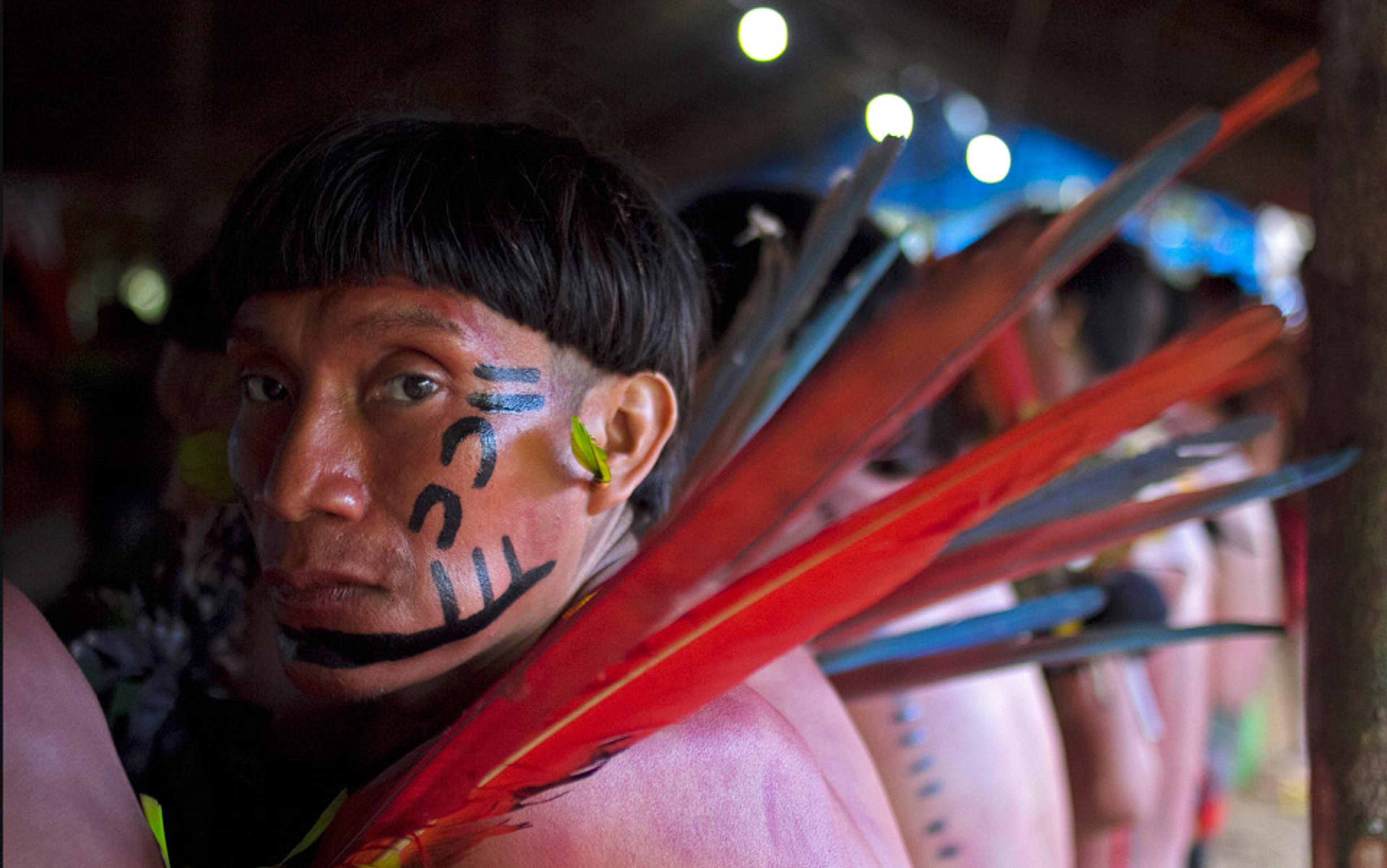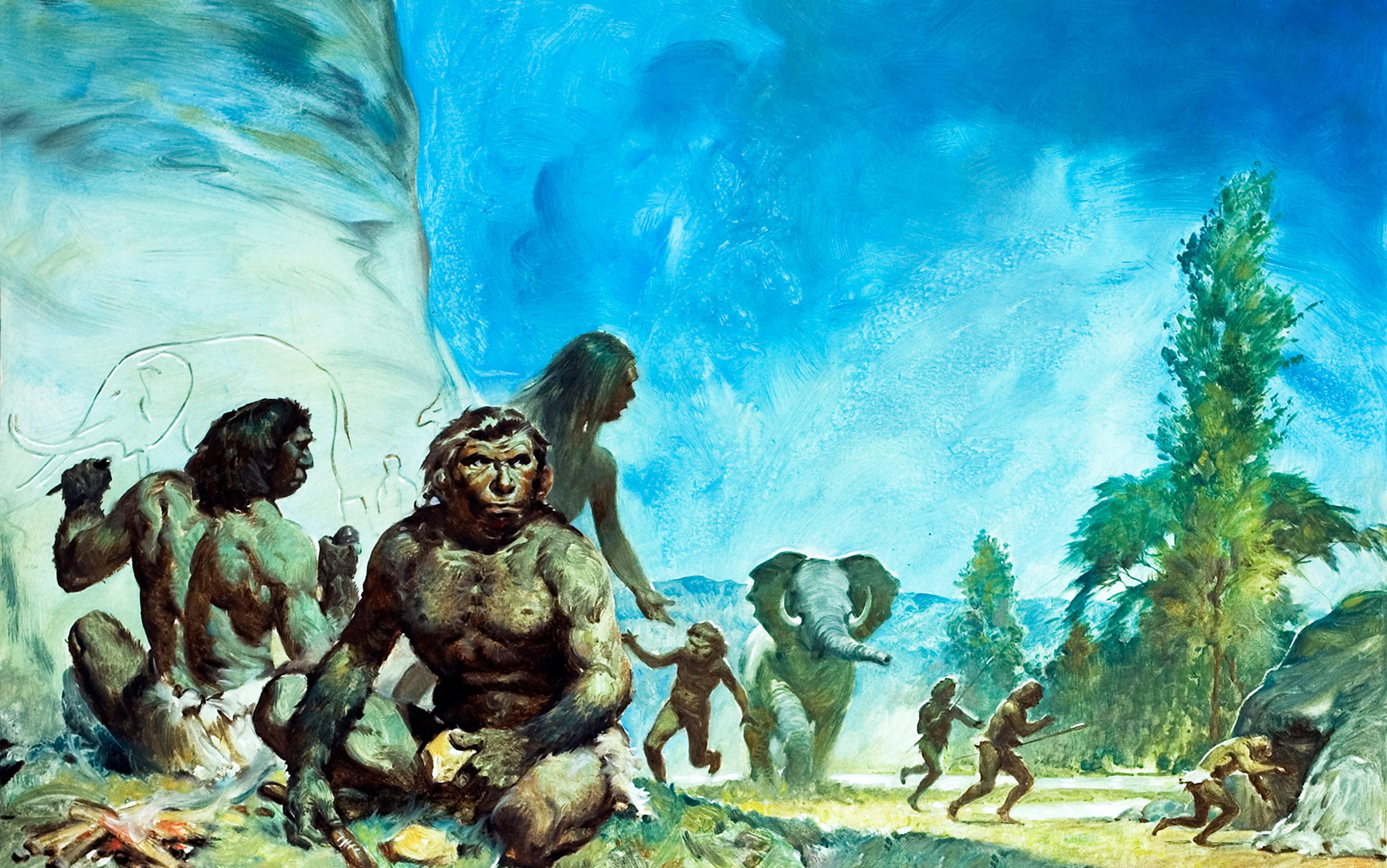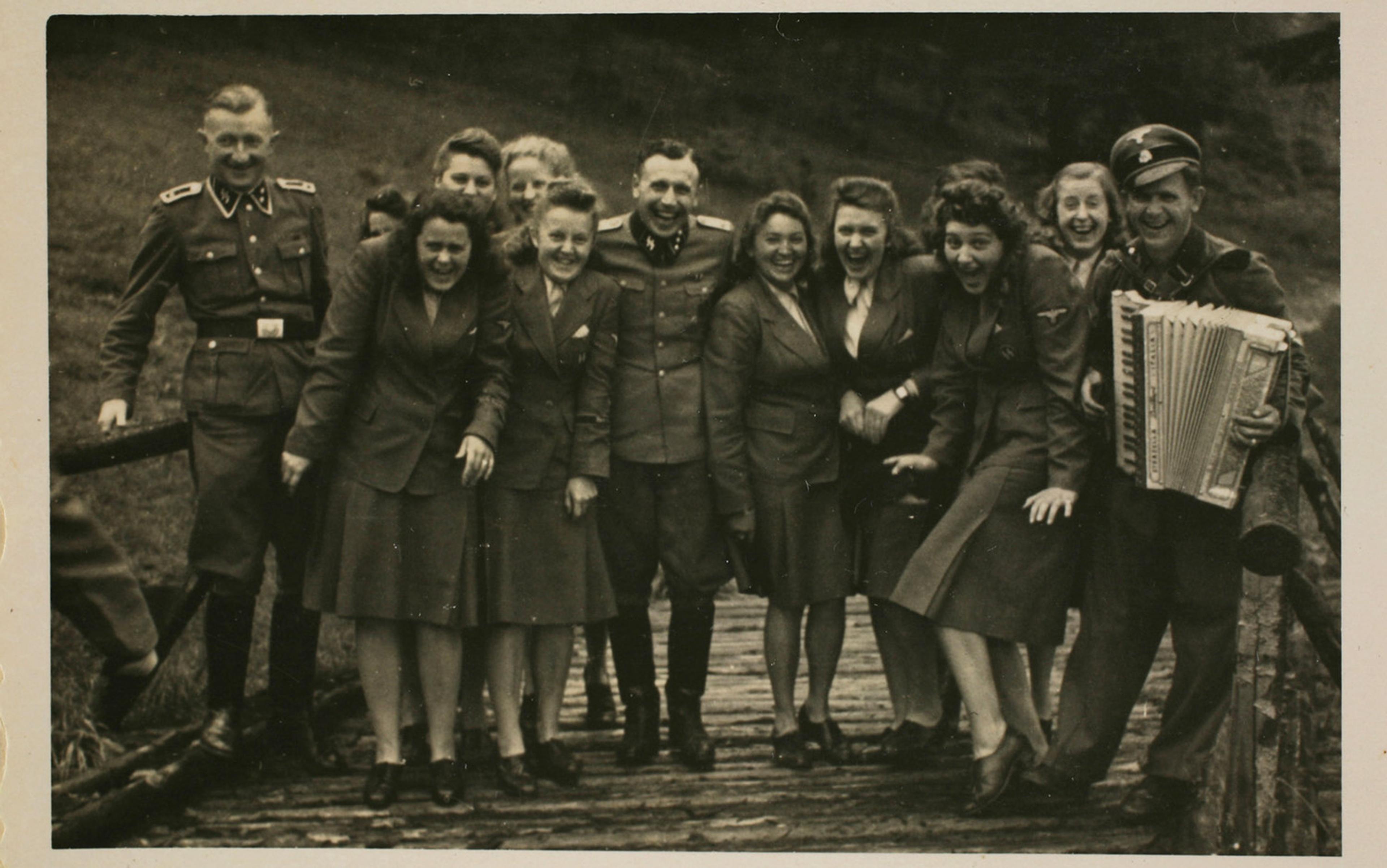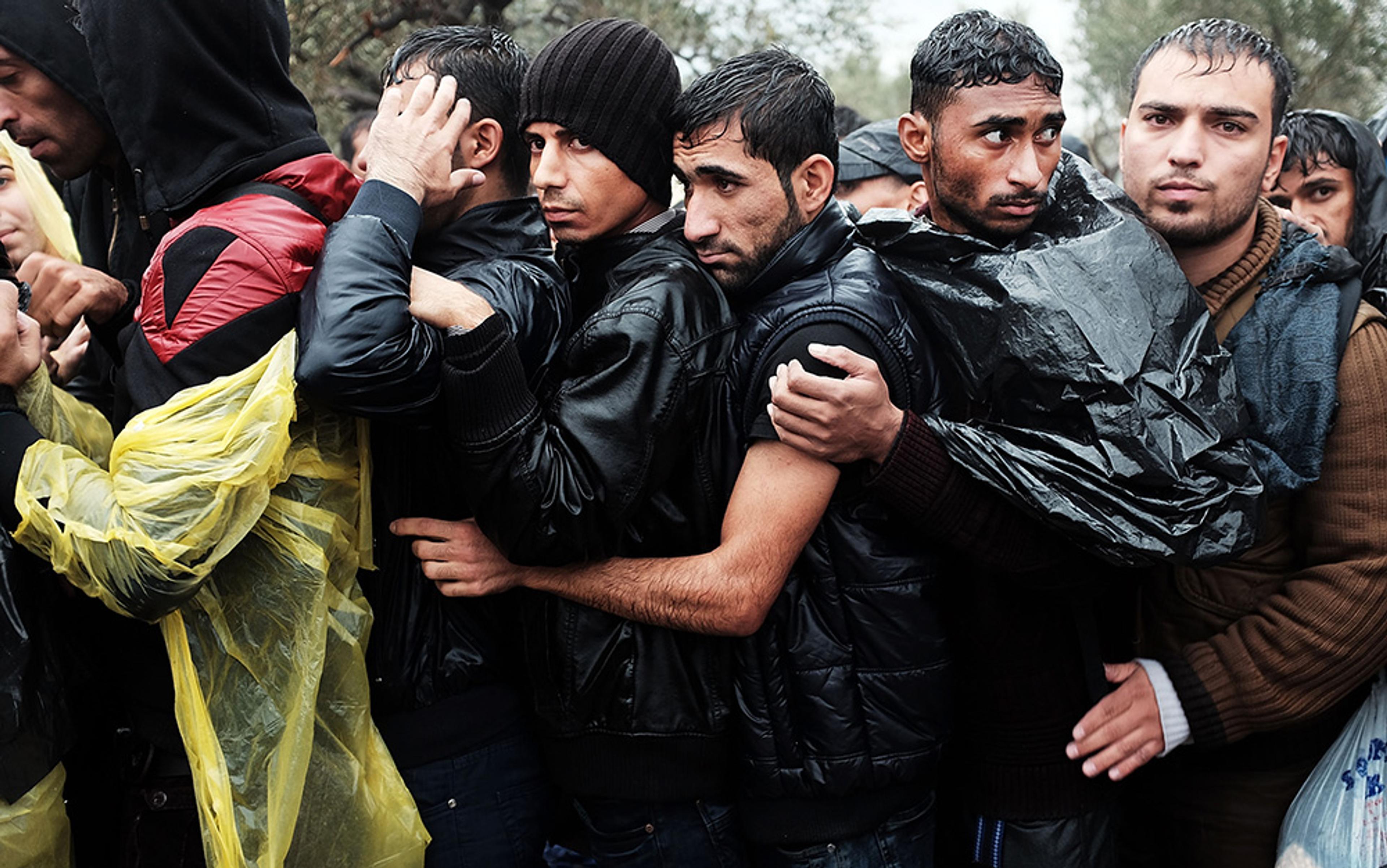There is something peculiarly — even paradoxically — appealing about taking a dim view of human nature, a view that has become unquestioned dogma among many evolutionary biologists. It is a tendency that began some time ago. When the Australian-born anthropologist Raymond Dart discovered the first australopithecine fossil in 1924, he went on to describe these early hominids as:
Confirmed killers: carnivorous creatures that seized living quarries by violence, battered them to death, tore apart their broken bodies, dismembered them limb from limb, slaking their ravenous thirst with the hot blood of the victims and greedily devouring living writhing flesh.
This lurid perspective has deep antecedents, notably in certain branches of Christian doctrine. According to the zealous 16th century French theologian John Calvin:
The mind of man has been so completely estranged from God’s righteousness that it conceives, desires, and undertakes, only that which is impious, perverted, foul, impure and infamous. The human heart is so steeped in the poison of sin, that it can breathe out nothing but a loathsome stench.
It’s bad enough for the religious believer to be convinced of humanity’s irrevocable sinfulness, punishable in the afterlife. But I’m even more concerned when those who speak for science and reason promote a theory of human nature that threatens to become a self-fulfilling prophecy. For example, in his influential book African Genesis (1961) the American playwright Robert Ardrey described humans as ‘Cain’s children’:
Man is a predator whose natural instinct is to kill with a weapon. It is war and the instinct for territory that has led to the great accomplishments of Western Man. Dreams may have inspired our love of freedom, but only war and weapons have made it ours.
The drumbeat that argues for war as a defining feature of the human condition has, if anything, increased in recent decades, spreading beyond the evolutionary and anthropological worlds. Here is how the English philosopher Simon Critchley began his review of John Gray’s The Silence of Animals (2013) in the Los Angeles Review of Books: ‘Human beings do not just make killer apps. We are killer apes. We are nasty, aggressive, violent, rapacious hominids’.
Then there is the American anthropologist Napoleon Chagnon, who devoted decades to studying the Yanomami people of the Venezuelan/Brazilian Amazon. His best-selling book The Fierce People (1968) has been especially influential in enshrining an image of tribal humanity as living in a state of ‘chronic warfare’.
Chagnon has been the subject of intense criticism but, to my mind, there is simply no question about the empirical validity and theoretical value of his research. In a field (call it evolutionary psychology or, as I prefer, human sociobiology) that has often been criticised for a relative absence of hard data, his findings, however politically distasteful, have been welcome indeed. Among these, one of the most convincing has been Chagnon’s demonstration that, among the Yanomami, not only is inter-village ‘warfare’ frequent and lethal, but that Yanomami men who have killed other men experience significantly higher reproductive success — evolutionary fitness — than do non-killers. His data, although disputed by other specialists, appear altogether reliable and robust.
So I admire the man, and his work, but I have a growing sense of discomfort about the way that Chagnon’s Yanomami research has been interpreted and the inferences that have been drawn from it.
I fear that many of my colleagues have failed, as previously have I, to distinguish between the relatively straightforward evolutionary roots of human violence and the more complex, multifaceted and politically fraught question of human war. To be blunt, violence is almost certainly deeply entrenched in human nature; warfare, not so much. A fascination with the remarkably clear correlation between Yanomami violence and male fitness has blinded us to the full range of human non-violence, causing us to ignore and undervalue realms of peacemaking in favour of a focus on exciting and attention-grabbing patterns of war-making.
As an evolutionary scientist, I have been enthusiastic about identifying the adaptive significance — the evolutionary imprint — of apparently universal human traits. For a long time, it seemed that Chagnon’s finding of the reproductive success of Yanomami men who were killers was one of the most robust pieces of evidence for this. Now I am not so sure, and this is my mea culpa.
There has also been a tendency among evolutionary thinkers to fix upon certain human groups as uniquely revelatory, not simply because the research about them is robust, but also because their stories are both riveting and consistent with our pre-existing expectations. They are just plain fun to talk about, especially for men.
Remember, too, the journalists’ edict: ‘If it bleeds, it leads.’ You are unlikely to see a newspaper headline announcing that ‘France and Germany Did Not Go To War’, whereas a single lethal episode, anywhere in the world, is readily pounced upon as news. Language conventions speak volumes, too. It is said that the Bedouin have nearly 100 different words for camels, distinguishing between those that are calm, energetic, aggressive, smooth-gaited, or rough, etc. Although we carefully identify a multitude of wars — the Hundred Years War, the Thirty Years War, the American Civil War, the Vietnam War, and so forth — we don’t have a plural form for peace.
It makes evolutionary sense that human beings pay special attention to episodes of violence, whether interpersonal or international: they are matters of life and death, after all. But when serious scientists do the same and, what is more, when they base ‘normative’ conclusions about the human species on what is simply a consequence of their selective attention, we all have a problem.
The most serious problem with Chagnon’s influence on our understanding of human nature is one familiar to many branches of science: generalising from one data set — however intensive — to a wider universe of phenomena. Academic psychologists, for example, are still reeling from a 2010 study by the University of British Columbia which found that the majority of psychological research derives from college students who are ‘Western, Educated, Industrialised, Rich, and Democratic’ — in short, WEIRD. Similarly, the Yanomami are only one of a large number of very different, tribal human societies. Given the immense diversity of human cultural traditions, any single group of Homo sapiens must be considered profoundly unrepresentative of the species as a whole.
Just as the Yanomami can legitimately be cited as notably violence-prone — at both the individual and group level — many other comparable tribal peoples do not engage in anything remotely resembling warfare. These include the Batek of Malaysia, the Hadza of Tanzania, the Martu of Australia, a half-dozen or more indigenous South Indian forager societies, and numerous others, each of whom are no less human than those regularly trotted out to ‘prove’ our inherent war-proneness.
In the Dark Ages of biology, taxonomists used to identify a ‘type species’ thought to represent each genus, but the idea no longer has any currency in biology. The great evolutionary biologist Ernst Mayr effectively demonstrated that statistical and population thinking trumps the idea of a Platonic concept of ‘types’, independent of the actual diversity of living things, not least Homo sapiens. Yet anthropologists (and biologists, who should know better) seem to have fallen into the trap of seizing upon a few human societies, and generalising them as representative of Homo sapiens as a whole. Regrettably, this tendency to identify ‘type societies’ has been especially acute when it comes to establishing the supposed prevalence of human warfare.
War, on the other hand, is like arranging a wedding with a bridal shower or bachelor party, and laying on a hotel ballroom, an orchestra, a four-course meal and dancing
In his justly admired book The Better Angels of our Nature (2011), the evolutionary psychologist Steven Pinker made a powerful case that human violence — interpersonal as well as warring — has diminished substantially in recent times. But in his eagerness to emphasise the ameliorating effects of historically recent social norms, Pinker exaggerated our pre-existing ‘natural’ level of war-proneness, claiming that ‘chronic raiding and feuding characterised life in a state of nature’. The truth is otherwise. As recent studies by the anthropologist Douglas Fry and others have shown, the overwhelmingly predominant way of life for most of our evolutionary history — in fact, pretty much the only one prior to the Neolithic revolution — was that of nomadic hunter-gatherers. And although such people engage in their share of interpersonal violence, warfare in the sense of group-based lethal violence directed at other groups is almost non-existent, having emerged only with early agricultural surpluses and the elaboration of larger-scale, tribal organisation, complete with a warrior ethos and proto-military leadership.
Other well-regarded scientists have been similarly misled. Thus, in The Social Conquest of Earth (2012), the biologist Edward O Wilson calls warfare ‘humanity’s hereditary curse’. I applaud both Pinker’s and Wilson’s distaste for war, but I wish they had thought more deeply and consulted the cross-cultural and archaeological evidence more carefully before jumping on the ‘war has always been with us’ bandwagon.
Human history demonstrates how recent warfare is in our own evolutionary story. But what about our closest ape relatives? As with human societies, we have no living ancestors among the apes. We doubtless share a common ancestor with today’s chimpanzees, bonobos, gorillas, orangutans and gibbons, but the social behaviour of the latter three are all dramatically different from that of modern human beings, while that of chimpanzees and bonobos are almost exactly opposed to one another: chimpanzees are known to engage in violent, group-level encounters, complete with search-and-destroy missions that conjure images of human skirmishing and outright warfare. Bonobos, on the other hand — genetically, no more distant from Homo sapiens — do nothing of the sort, and are renowned for making love, not war.
When it comes to human aggression, violence and war, there simply is no unitary direction impelled by evolution. On the one hand, we are capable of despicable acts of horrific violence; on the other, we evince remarkable compassion and self-abnegation. Our selfish genes can generate a wide array of nasty, destructive and unpleasant actions; and yet, these same selfish genes can incline us toward altruistic acts of extraordinary selflessness. It is at least possible that our remarkably rapid brain evolution has been driven by the pay-off derived by successful warlike competition with other primitive human and humanoid groups. But it is equally possible that it was driven by the pay-off associated with co-operation, co‑ordination and mutual care-taking.
Indeed, it is easy to develop models whereby animals and people who are adroit at these tasks — along with genes that predispose in such directions — will be favoured by natural selection over alternative individuals and alleles that are comparatively more bellicose. Moreover, even as warfare is new to the human experience and therefore liable to be culturally induced rather than biologically based, behavioural systems of restraint are old, shared by numerous animal species, and therefore likely to be deep-seated in our nature. After all, even in a war-ridden world, actual wars are much rarer than are examples of non-violent conflict resolution; the latter happens every day, among nations no less than between individuals.
I have never argued that human beings are biologically equipotential, capable of doing or becoming anything they wish, independent of their evolutionary bequest — and I don’t intend to now. We could never be as altruistic as worker honeybees, or as solitary as deep-sea angler fish. There are no human societies in which all members are expected to have sex a dozen times each day, or not at all. But there is a limit to our genetically influenced proclivities — and this, please note, is written by an evolutionary biologist who has been accused of hypothesising genes for just about everything.
A useful distinction in this regard is between evolved adaptations and capacities. Language is almost certainly an adaptation, something that all normal human beings can do, although the details vary with circumstance. By contrast, reading and writing are capacities, derivative traits that are unlikely to have been directly selected for, but have developed through cultural processes. Similarly, walking and probably running are adaptations; doing cartwheels or handstands are capacities. In my view, interpersonal violence is a human adaptation, not unlike sexual activity, parental care, communication and so forth. It is something we see in every human society. Meanwhile, war — being historically recent, as well as erratic in worldwide distribution and variation in detail — is almost certainly a capacity. And capacities are neither universal nor mandatory.
Both a devil and an angel perch on our shoulders, gesturing toward evolutionary predilections in both directions
Let me be clear. Violence is widespread and, sadly, deeply human, just as the adaptation for violence under certain circumstances is similarly ingrained in many other species. But war is something else. It is a capacity, and involves group-oriented lethal violence. Thus it deserves to be distinguished from rivalry, anger, ‘crimes of passion’ or revenge, or other forms of homicide. To engage an absurdly positive simile: violence is like marriage, in the sense that some sort of process whereby adults solemnise their relationship appears to be a cross-cultural universal, and is a likely candidate for being an adaptive part of human nature. War, on the other hand, is like arranging a wedding with a bridal shower or bachelor party, and laying on a hotel ballroom, an orchestra, a four-course meal and dancing. It is safe to assume that neither employing a photographer, serving a multi-tiered wedding cake, enlisting bridesmaids nor tying baby shoes to the bumper of the newly-weds’ car spring from the human genome, although people are capable of doing all these things. By the same token, plain, old interpersonal violence is a real, albeit regrettable, part of human nature. War is even more regrettable, but is no more ‘natural’ than a bridal shower or the assembly line used to construct a stealth bomber.
The psychologist B F Skinner wrote that ‘no theory changes what it is a theory about; man remains what he has always been’. True enough for most phenomena: the solar system is as it was when Ptolemaic thinking held sway; nor did this change after Copernicus, Kepler and Galileo came up with a more accurate descriptive theory. And gravity was gravity before and after Newton.
But theories of human nature are rather different. When I write or lecture about the social behaviour and reproductive strategies of different marmot species, no sociopolitical implications are involved. But when I write or lecture about violence, aggression and/or war-making in humans, it makes a huge difference whether I describe the pacific Lepcha of the Himalayas or the fierce Yanomami.
It’s not that any particular theory changes human nature itself. Rather, our expectations and thus our behaviour changes, and with very serious consequences. If we are convinced, for example, that Thomas Hobbes was correct and people are naturally inclined to be nasty and brutish, this has implications for our politics, including our sense of national budgetary priorities — how much to invest in, say, education and health care versus the police and the military — which in turn is liable to become a self-fulfilling prophecy. How many arms races and cycles of international distrust have been fed by a pre-existing view that the other side is aggressive, potentially violent and irremediably warlike, which in turn leads to policies and actions that further confirm such assumptions?
Especially when they speak to matters of war and peace, theories about the fundamental nature of human beings are more insidious and influential than other evolutionary research, such as whether modern humans carry Neanderthal genes, or the potency of gene versus individual versus group selection, and so forth. It’s not that I believe in a postmodern world in which language and ideology construct reality. Rather, I recognise that these particular ideas have real effects on crucial topics such as national levels of defence spending and whether or not to go to war.
I am not arguing that scientific perspectives should be evaluated by their ideological, political, and social implications. Unlike matters of ideology, theology, or ethics, science must be assessed only by the degree to which its fruits are, or are not, falsified, the confidence with which we can agree on their usefulness, and the extent to which they generate further testable ideas. But we must also remain alert when science risks being misused for ideological purposes, not to mention the subtle extent to which researchers can unintentionally bias their findings, simply by their choice of research subjects — as when one or a few human societies are taken as indicative of our entire species. Worse yet is when the danger goes beyond being misled on the ‘merely scientific’ to embracing consequences for social and political policy.
The human mind is drawn toward simple either/or statements — God versus the devil, cowboys versus Indians, you’re either with us or you’re with the terrorists — but reality is more nuanced and complex. This applies particularly to the seemingly simple question of whether human beings are ‘naturally’ or ‘instinctively’ aggressive or violent. In the past, popular treatments of human beings as ‘killer apes’ have clearly been misguided in their single-mindedness; ditto for others purporting to demonstrate that we are uniformly co-operative and peaceful. Our human nature is neither Rousseauian nor Hobbesian; instead, both a devil and an angel perch on our shoulders, gesturing toward evolutionary predilections in both directions.
At this point, readers looking to evolution for guidance can be forgiven if they feel confused, even frustrated by the fact that our biological heritage is so ambiguous, or ambivalent. It is certainly worthwhile interrogating the evolutionary background to our predilections, but the answers will lead us back to Jean-Paul Sartre’s formulation that human beings are ‘condemned to be free’. Advocates for peace might be relieved that we are not biologically obliged to war, or be distraught that we are not unilaterally predisposed to peace, but we are all stuck with an obligation (if not necessarily a predisposition) to assess our uniquely human situation as honestly as we can.
When dealing with matters of war-proneness versus peaceful capabilities, it would be far better, not only for scientific accuracy but also for social consequence, if we took seriously this pronouncement by one of the premier authorities on human nature, Theodore Geisel (aka Dr Seuss): ‘You have brains in your head. You have feet in your shoes. You can steer yourself any direction you choose.’






